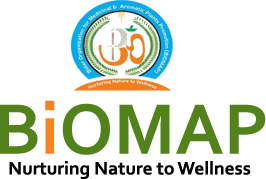SYMPTOMS OF DAIBETES
“In both types of diabetes, signs and symptoms are more likely to be similar as the blood sugar is high, either due to less or no production of insulin, or insulin resistance. In any case, if there is inadequate glucose in the cells, it is identifiable through certain signs and symptoms.”
Diabetes Type 1
“In type 1, the pancreas stop producing insulin due to autoimmune response or possibly viral attack on pancreas. In absence of insulin, body cells don’t get the required glucose for producing ATP (Adenosin Triphosphate) units which results into primary symptom in the form of nausea and vomiting. In later stage, which leads to ketoacidosis, the body starts breaking down the muscle tissue and fat for producing energy hence, causing fast weight loss. Dehydration is also usually observed due to electrolyte disturbance.”
Diabetes Type 2
“Increased fatigue: Without access to their preferred fuel–glucose–the body’s cells struggle to keep up with the energy demands of keeping the body running. Clinically, this manifests as chronic fatigue or lack of energy, which is unrelieved by rest or sleep.
Polyuria (Frequent urination): Three common symptoms of diabetes are the 3 P’s: polyuria, polydipsia and polyphagia. Polyuria is increased urine production. As the blood glucose level rises, the kidneys are overwhelmed by the sugar overload and glucose spills into the urine–bringing with it a lot of water. The result is loss of large amounts of total body water through increased urine production. This first P, polyuria, causes the second P–polydipsia.
Polydipsia (Increases thirst): Polydipsia is the medical term for excessive thirst. Because of the large volume of water being lost through the kidneys due to sugar spillage, the body is at a chronic water deficit. This leads to excessive thirst, which manifests as drinking large quantities of fluids.
Polyphagia (Increased Hunger): Polyphagia is excessive hunger. Glucose is the primary fuel of the body’s cells; without it, the cells are starved for energy. Normally, the circulating blood brings glucose to the cells and insulin facilitate its entry. Without insulin to help glucose get into the cell, it cannot enter. Hence, in type 1 diabetes, there is plenty of blood glucose for the taking, but the cells remain starved because there isn’t enough insulin to help the glucose enter. The body responds to the cells’ starvation by sending out hunger signals. Indeed, people with diabetes often eat what seems to be excessive amounts of food. However, the food cannot be utilized normally, which leads to the next symptom–weight loss.”
Weight Loss
“People with undiagnosed or uncontrolled type 1 diabetes often have unintentional weight loss. They eat sufficient calories and digest their food normally–but the glucose from the food cannot reach its final destination, the body’s cells. Without sufficient glucose to fuel the cells, the body breaks down fat and protein to provide backup fuels. The result is often unintentional weight loss, which can be quite rapid and substantial.
Blurry vision: Hyperosmolar hyperglycemia nonketotic syndrome is the condition when body fluid is pulled out of tissues including lenses of the eye, which affects its ability to focus, resulting blurry vision
Irritability: It is a sign of high blood sugar because of the inefficient glucose supply to the brain and other body organs, which makes us feel tired and uneasy.”


